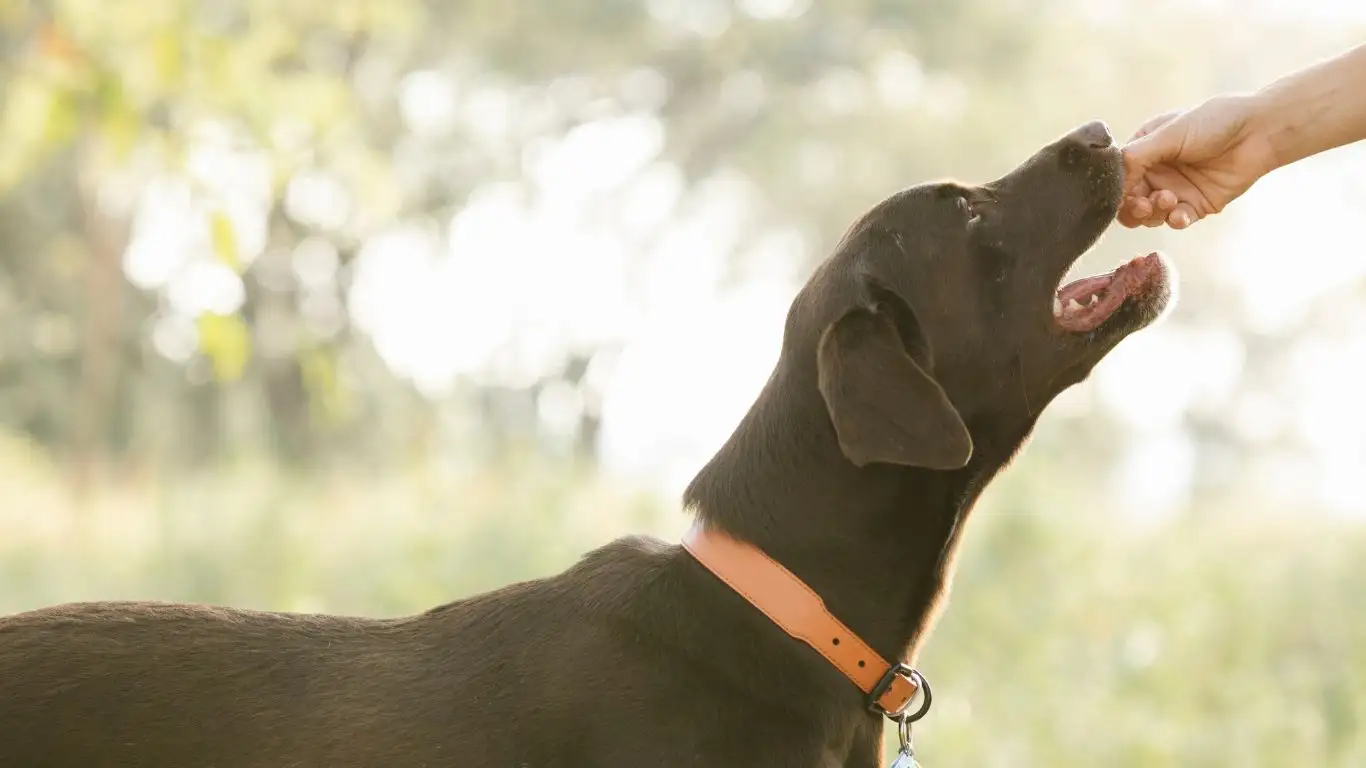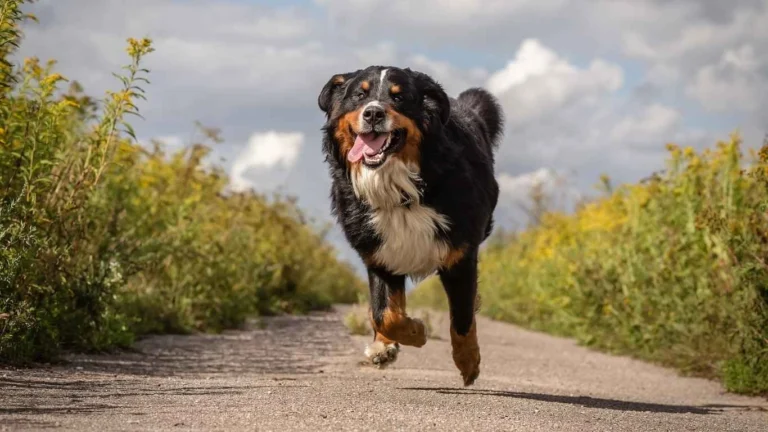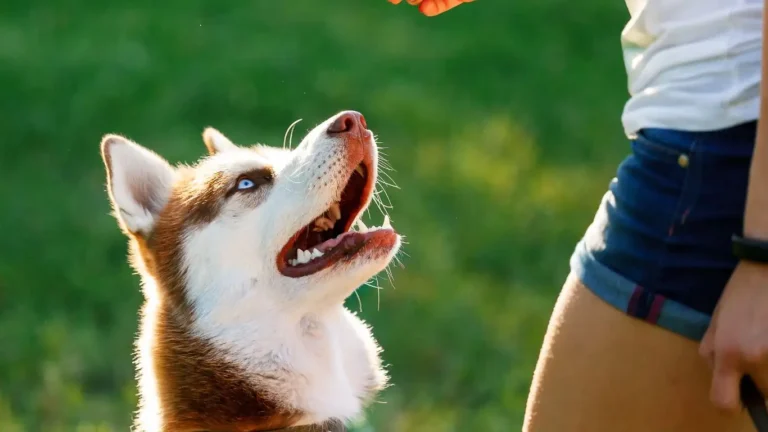How to Train a Dog to Be a Polite Jogging Companion: Essential Tips for Success
Let’s be honest—there’s nothing quite like hitting the pavement with your pup trotting happily beside you. If you’re wondering how to train a dog to be a polite jogging companion, you’re not alone. As someone who’s spent years as a Canine-Assisted Therapy Trainer, I’ve worked with dogs of all shapes, sizes, and energy levels. And yes, I’ve had my share of tangled leashes, surprise bathroom breaks mid-sprint, and those hilarious zigzag sprints after squirrels. But over time, I’ve learned what works (and what definitely doesn’t) when it comes to getting your dog to be a well-mannered jogging buddy.
Why Jogging With Your Dog Is Worth the Effort
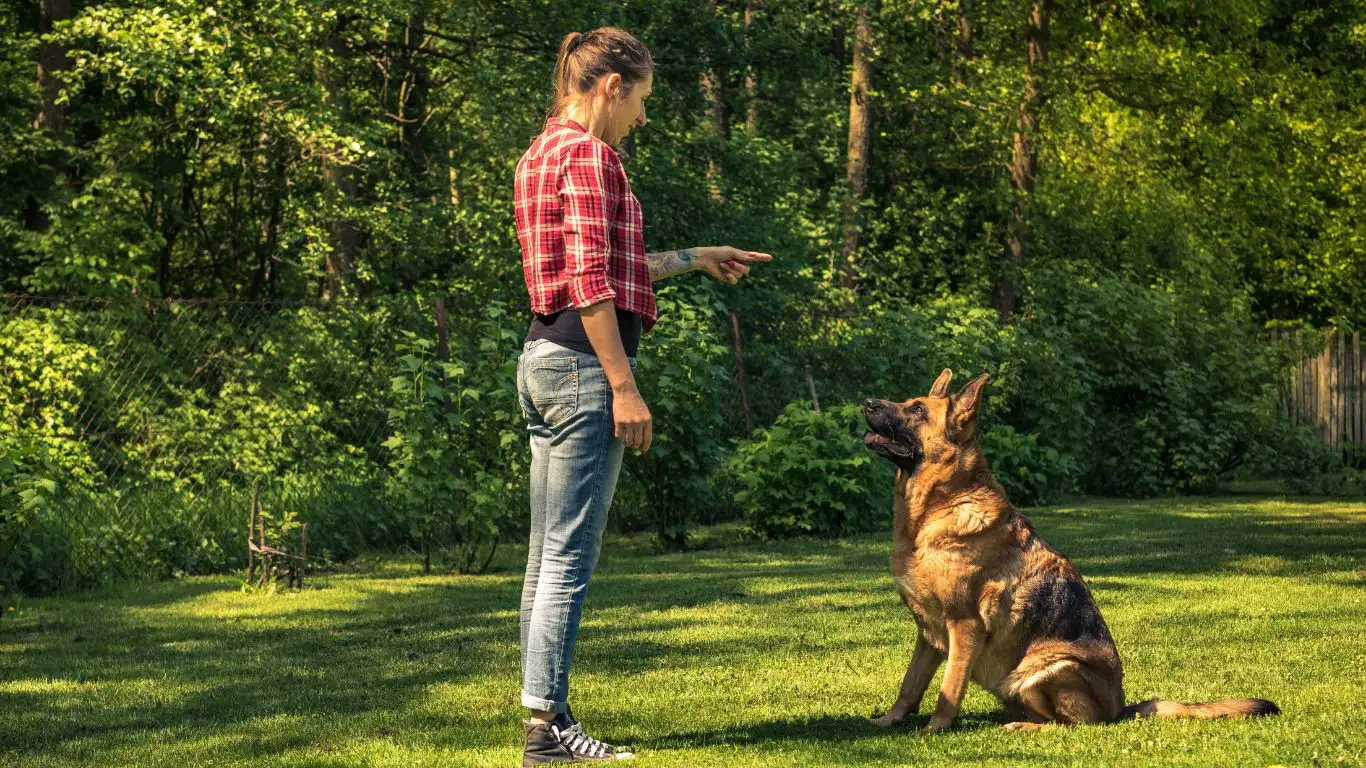
First off, jogging with your dog isn’t just about getting your own steps in. It’s also a bonding experience, a physical and mental workout for your pup, and let’s face it—dogs make the best accountability partners. But it’s not as simple as snapping on a leash and heading out the door. A good canine jogging partner is made, not born.
In my early days working with therapy dogs, I noticed something interesting—dogs that learned polite leash behavior and impulse control made amazing jogging companions. They didn’t dart into the street, yank my arm out of socket, or stop to sniff every blade of grass. With a bit of training and consistency, your dog can be that dream partner too.
Physical Readiness: Is Your Dog Built for Running?
Before we get into the nuts and bolts of how to train a dog to be a polite jogging companion, let’s talk health. Just like people, not all dogs are built for distance running. Some pups are more into power walks and short sprints than long-distance endurance. Here’s what I usually consider:
- Age: Puppies under 12-18 months shouldn’t jog regularly. Their joints are still developing.
- Breed: Breeds like Huskies, Vizslas, and Border Collies are born runners. Bulldogs, Pugs, and Dachshunds? Not so much.
- Health Conditions: Always check with your vet if your dog has hip dysplasia, arthritis, or any medical condition.
I once worked with a golden retriever named Marley who had a ton of enthusiasm but also early signs of joint issues. We swapped jogging for fast-paced walks and swimming instead. Moral of the story? Know your dog and customize accordingly.
Start With Solid Leash Manners
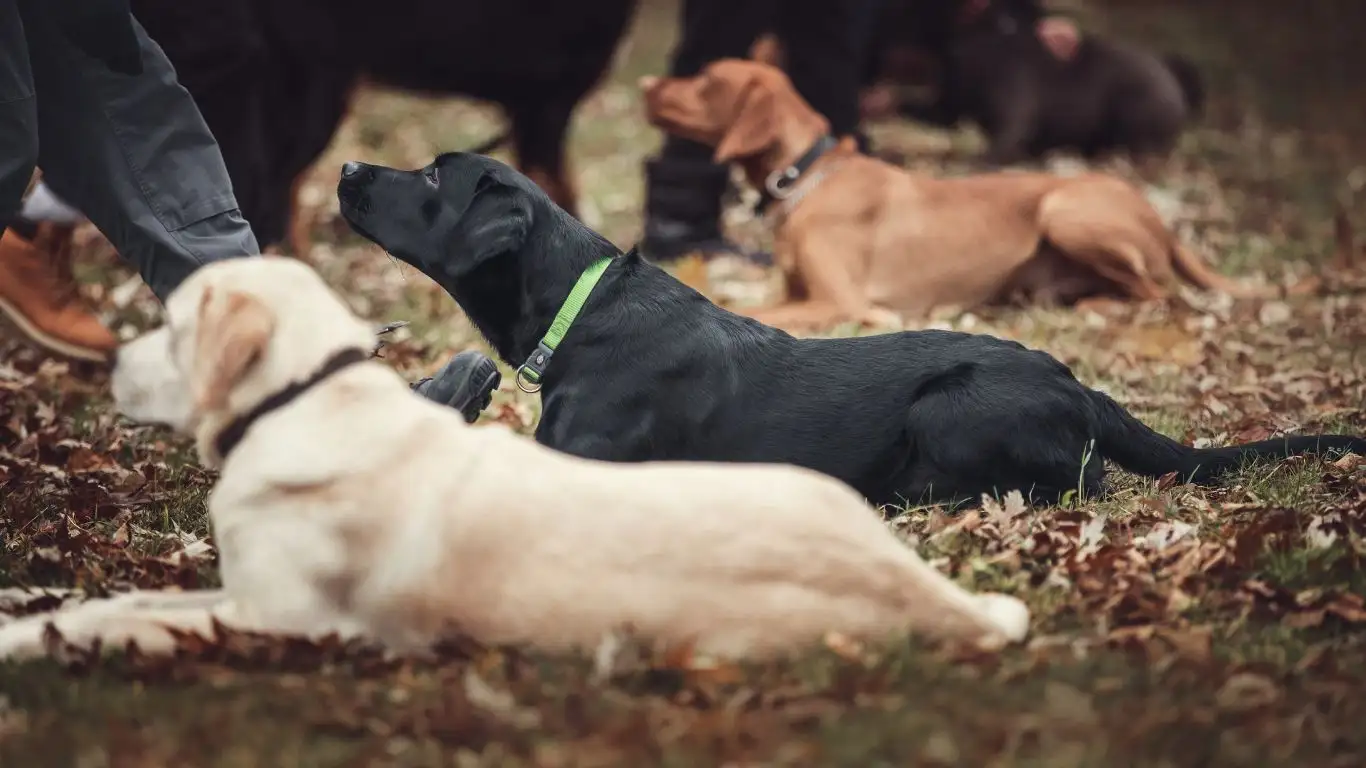
If your dog pulls like a sled dog on caffeine, jogging will be a disaster. Trust me—I’ve been dragged through more than one muddy park trail in my earlier training days. Teaching polite leash behavior is your foundation. Here’s what I usually teach in basic leash etiquette before we ever start jogging:
- Loose-leash walking: Your dog should walk beside or slightly behind you with a slack leash.
- Focus commands: Teach cues like “Watch me” or “Let’s go” to regain attention when distracted.
- Impulse control: Practice stopping and sitting at every curb or random distraction (squirrels, other dogs, you name it).
I recommend starting your leash training sessions in a low-distraction environment like your backyard or a quiet park trail. Use lots of positive reinforcement—think treats, praise, and excited “Good job!”s. Make your dog believe that staying close to you is the most rewarding thing they can do.
Training Tools That Actually Help
Let’s talk gear. Over the years, I’ve seen what gear makes a difference and what just collects dust in the dog drawer.
- No-pull harness: A front-clip harness like the Freedom or Easy Walk can help guide your dog gently back to your side.
- Waist leash: Once your dog is reliable, a hands-free leash gives you better balance and less wrist strain.
- Treat pouch: You’ll want easy access to rewards while reinforcing good behavior on the go.
What I love about hands-free leashes is that it allows for more natural movement, which becomes crucial once you start building up distance. But remember, no gear can replace good training—it just helps support it.
Introduce Jogging in Small, Manageable Steps

Jumping straight into a 5K run with your dog is like signing a toddler up for a marathon. Don’t do it. Gradually building up your dog’s endurance and attention is key. Here’s the progression I typically use:
- Start with walk-jog intervals: Mix short jogging bursts into your regular walk (10-20 seconds).
- Use cue words: Say “Let’s run” or “Jog time” before you start moving faster so your dog knows what’s coming.
- Keep it short: 5–10 minutes max in the beginning is plenty, especially for beginners or younger dogs.
I once helped a client train her rescue mix, Benny, who was terrified of sudden movement. We started with 5-second jogs and lots of peanut butter rewards. After a few weeks? He was cruising down the trail like a pro. The key is being patient and celebrating small wins.
Watch Their Body Language
One of the biggest lessons I’ve learned training dogs is this: they’re always communicating. You just have to know what to look for. If your dog starts lagging behind, panting excessively, or pulling off to the side, it might be time to take a break. Look out for these signs:
- Excessive panting (tongue hanging out, wide open mouth)
- Limping or favoring one leg
- Refusing to move forward or lying down
Your goal isn’t just a physically fit pup—it’s a happy one too. Respecting your dog’s limits builds trust, which honestly makes everything else in training go smoother.
Building Distance and Endurance the Right Way
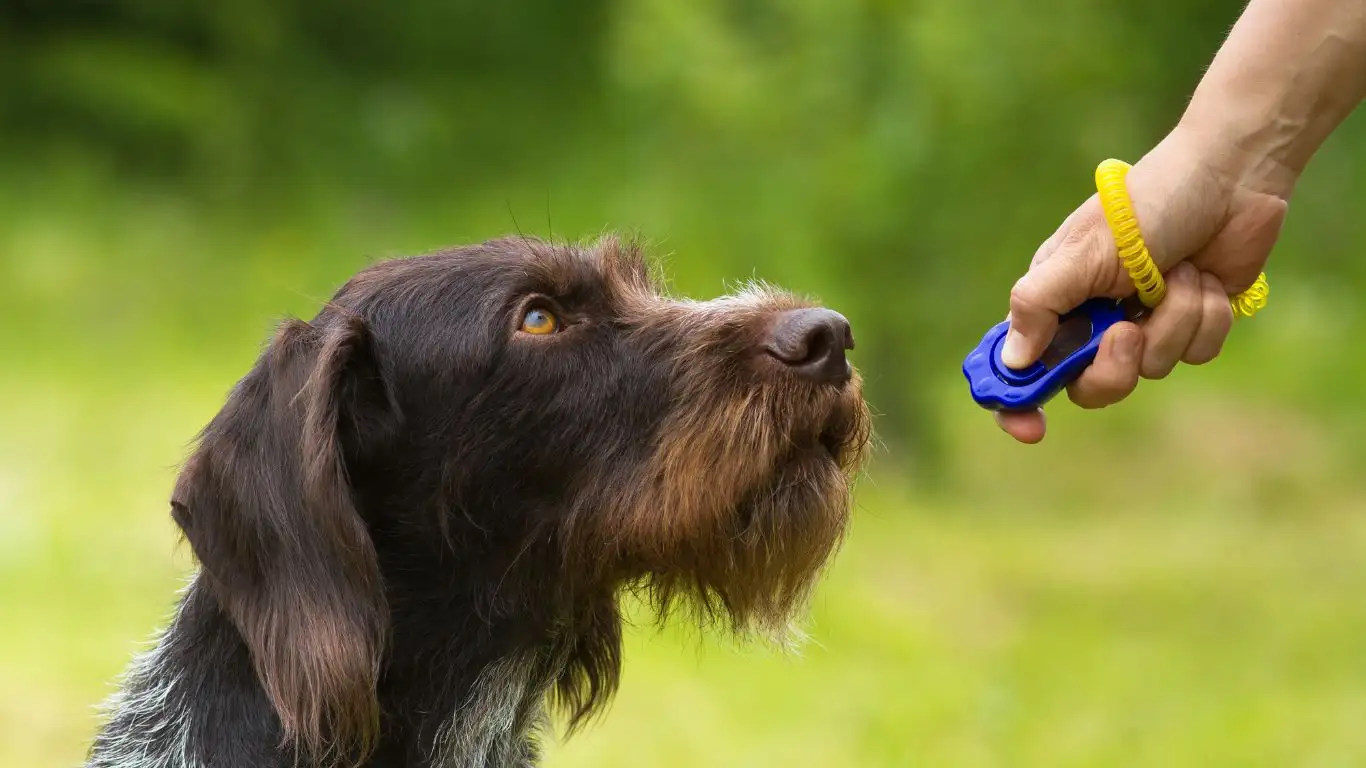
Once your dog is comfortable with short jogging bursts and stays consistently by your side, you can start stretching out your sessions. This is where a lot of folks (myself included, way back in the day) get a little too eager. I remember training a young Lab mix named Scout—she had boundless energy, and I made the rookie mistake of pushing her too far too fast. The next day, she was limping and completely disinterested in our usual walk. Lesson learned: slow and steady builds better long-term stamina.
Use a progressive training schedule, something like:
- Week 1: Walk for 10 mins, jog 2 mins total, spread out in intervals.
- Week 2: Increase jogging to 4 mins, decrease walking slightly.
- Week 3-4: Work toward a 1:1 ratio (walk 5 mins, jog 5 mins).
And always end with something fun—some fetch, a sniff break, or a chill belly rub at the end of the trail. Your dog will start associating jogging with fun and connection instead of just exercise.
Surface Matters More Than You Think
This is one of those details that gets overlooked but makes a huge difference. Pavement can be tough on a dog’s joints and paw pads, especially in hot or cold weather. If you can, aim for:
- Grass trails or dirt paths: softer impact, safer for joints.
- Shaded routes: dogs don’t sweat like we do, so they overheat faster.
- Off-hours jogs: early morning or evening runs help avoid pavement heat and foot traffic distractions.
Quick tip from experience: I keep a mini bottle of paw wax in my fanny pack during warm months. It’s great for conditioning pads and avoiding minor burns or scrapes after a rough run. I’ve used it religiously ever since my border collie, Luna, got a nasty pad crack after a long jog on a warm day. We live and learn, right?
Distraction-Proofing Your Jog
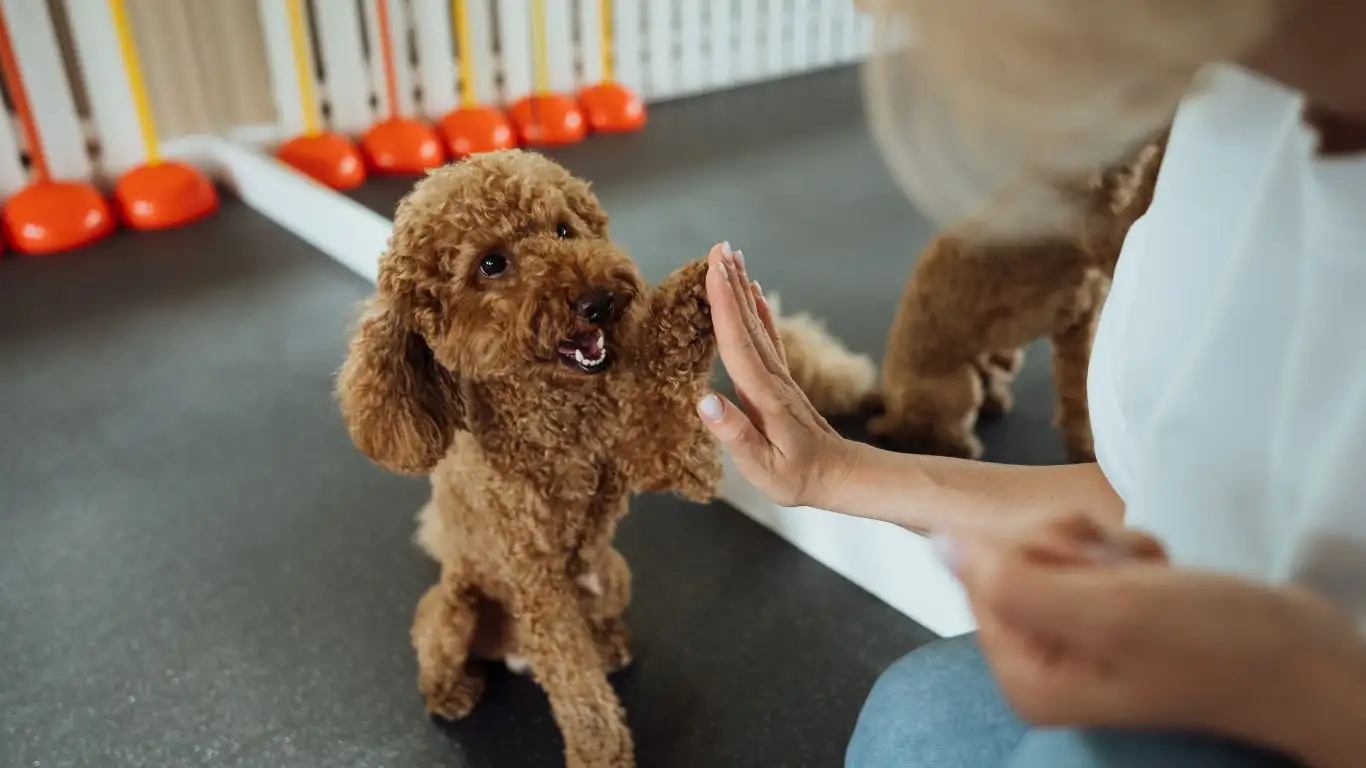
Even the most well-trained dogs can get distracted—squirrels, other joggers, loose dogs, food wrappers (ugh, the ultimate temptation). The trick is practicing impulse control during your jog, not just before it.
Here are some drills I’ve done with my clients and their dogs:
- Random stops: During a jog, suddenly stop and ask for a sit. Reward calm behavior, then start up again.
- Leave it on the go: Drop a treat or toy along the path and cue “Leave it” as you jog past.
- Pass-bys: Practice jogging past distractions (like other dogs) in a controlled setting before taking on busy trails.
One golden rule? Stay calm and consistent. Dogs read your body language like pros. If you get flustered every time you see another dog, guess who else will start reacting nervously? I always tell my clients to treat distractions like a chance to practice and praise—not something to fear.
What to Do When Things Go Sideways
Let’s keep it real: even the best-laid training plans go sideways. Your dog might have an off day, or you might be short on time and patience. That’s okay. I’ve had dogs freeze mid-jog, get tangled around my knees, or decide a mud puddle was their new favorite destination. Don’t sweat it.
Here’s how I usually troubleshoot:
- Lagging: Slow your pace, shorten the jog interval, or take a water break.
- Pulling: Stop, reset with a sit, and only move forward when leash is loose.
- Sudden stops: Wait calmly, avoid yanking the leash, and use a cue like “Let’s go.”
Remember: jogging is a skill for both of you. You’re not just building muscles—you’re building teamwork.
Keep Safety Front and Center
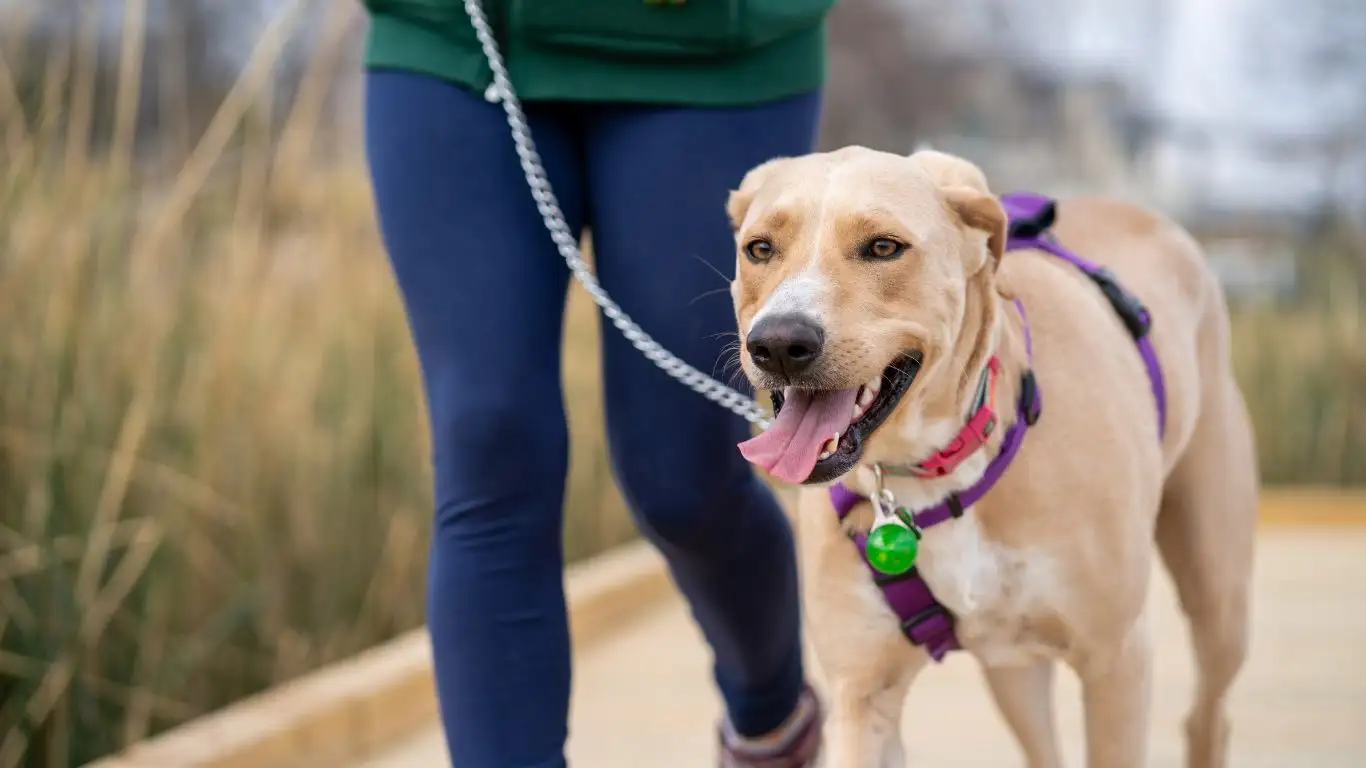
This might sound boring, but trust me, it’s super important. A safe run is a successful run, and as someone who has worked in therapy and behavior work, I’ve seen what happens when safety gets overlooked. Whether it’s a dog slipping out of a poorly-fitted harness or overheating on a sunny trail, these moments stick with you.
Here are my go-to safety must-haves:
- Reflective gear: For both you and your pup if you’re running at dawn or dusk.
- ID tags + microchip: You never plan to get separated, but always prepare like it could happen.
- Portable water bowl: Hydration is key, especially for longer jogs or warmer days.
- Proper harness/leash: Avoid retractable leashes. Stick with a sturdy 4-6ft leash or hands-free option.
I also keep a small canine first aid kit in my car—just in case. Once, while volunteering at a trail clean-up, I came across a dog who had sliced her paw on broken glass. Her owner had nothing with him. I was able to clean and wrap it just enough to get her to the vet. Trust me, being prepared isn’t being paranoid—it’s being responsible.
Jogging with Multiple Dogs? It’s Possible!
Okay, this one’s a bit more advanced, but it’s a question I get asked a lot. If you’re lucky (and patient), jogging with two dogs can work. I’ve done it regularly with my own pair—Luna and Scout. Here’s what made it possible:
- Train each dog individually first. They should be solid solo joggers.
- Use a split leash or double leash coupler to reduce tangle chances.
- Position the more experienced dog on the outside. The less confident one closer to you.
- Keep sessions short at first and celebrate the heck out of calm behavior!
Don’t rush into multi-dog jogging unless both dogs are consistent on leash and respectful of each other’s space. If not, it can quickly go from fun to frantic.
When Your Dog Isn’t Feeling the Jog – And What to Do About It
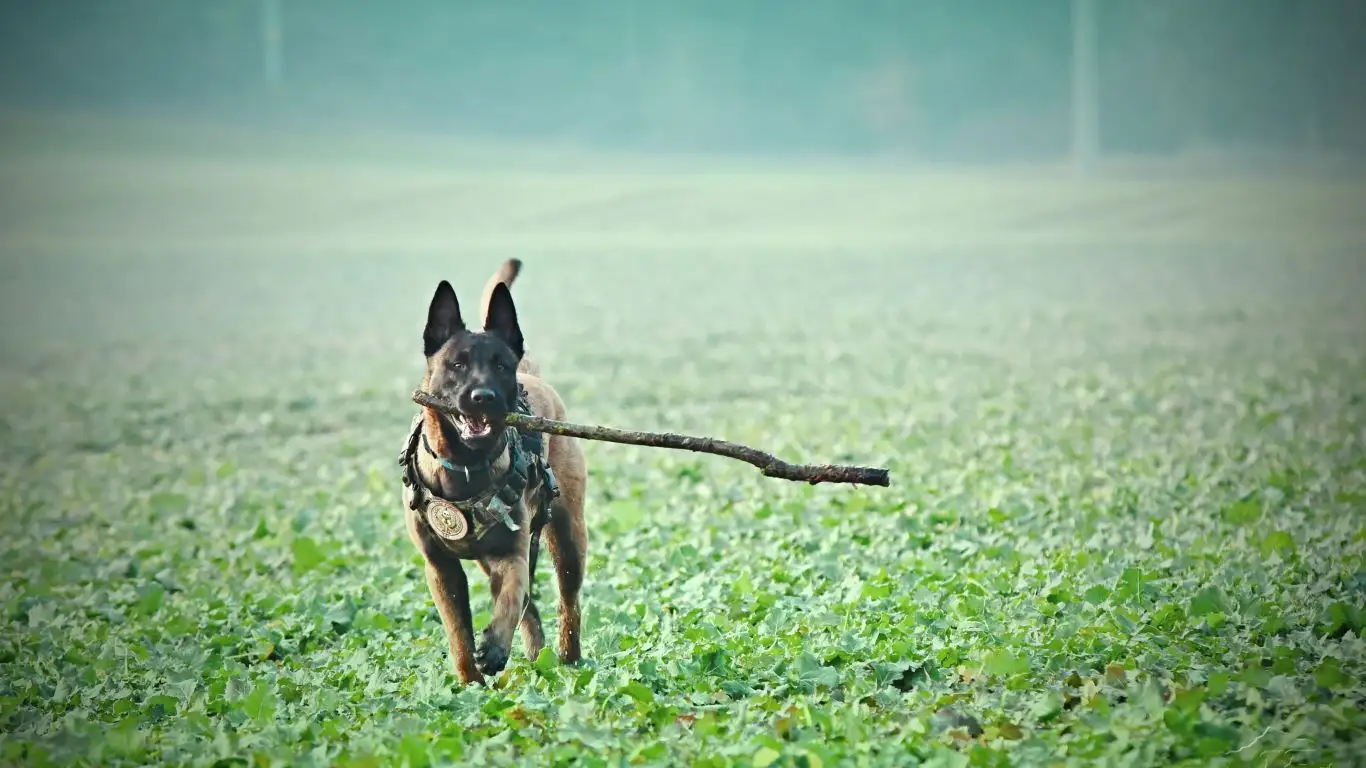
Let me say this upfront: not every dog will love jogging—and that’s totally okay. As a trainer, I’ve seen plenty of pups who preferred a leisurely sniff-walk or a cozy nap over any form of cardio. If your dog seems uninterested or resistant even after training and gradual introductions, don’t force it.
There was a sweet old Boxer named Max I worked with—his heart was in it, but his body just wasn’t built for sustained jogging. After a few trials, his human and I pivoted to structured walks and backyard agility instead. Max thrived. The takeaway? It’s not about pushing your dog into your routine—it’s about finding shared joy in movement.
Signs Your Dog Might Need a Break or a Different Activity
- Lack of enthusiasm: If your dog starts to drag or avoids getting leashed up, it’s a red flag.
- Frequent stops or stiffness post-run: This could signal joint discomfort or fatigue.
- Behavioral shifts: Over-jogging can lead to irritability, restlessness, or even reactivity.
Instead of pushing harder, consider adding variety—like hiking, structured play, or swimming. Keep an eye on your dog’s mood and physical state, and you’ll both stay in sync. You can always revisit jogging later with a fresh start.
Consistency: The Secret Sauce to a Well-Behaved Jogging Companion
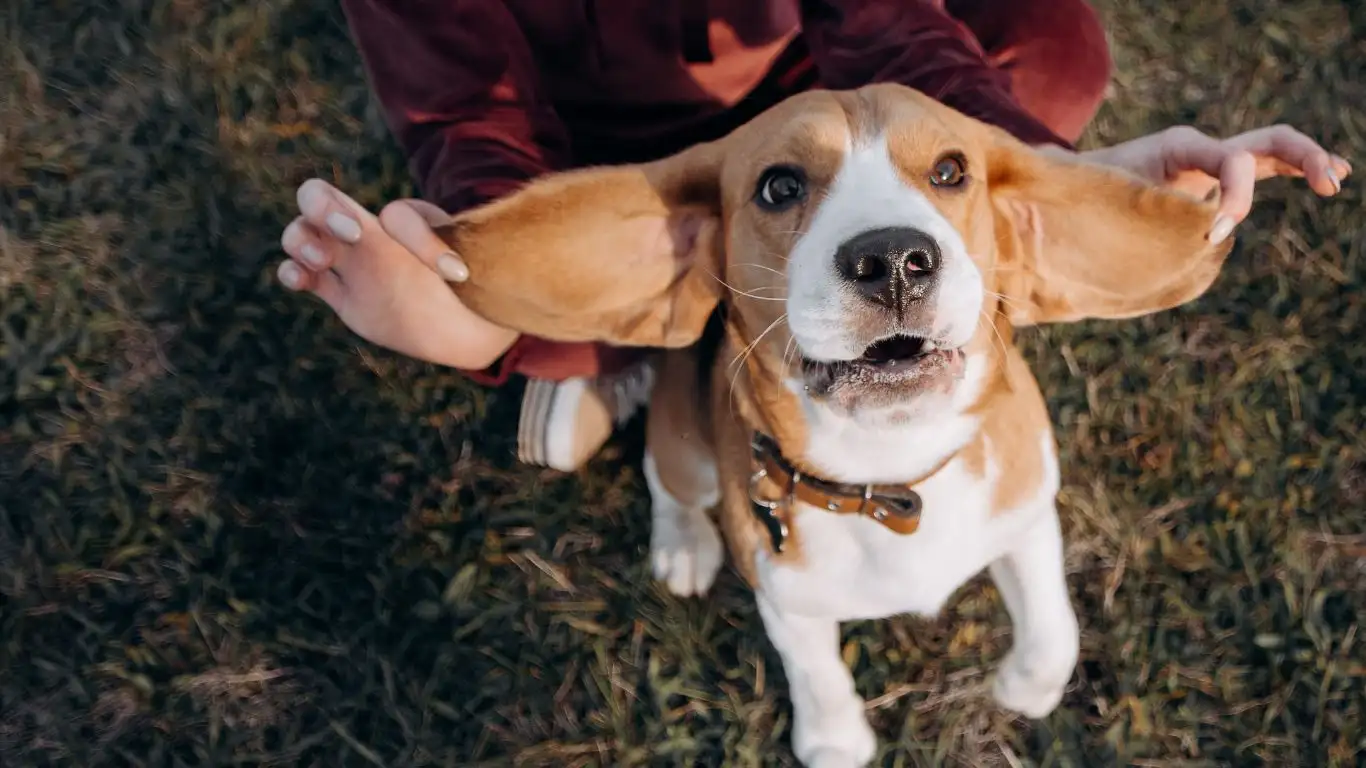
If I had to narrow down my years of experience into one golden rule, it would be this: consistency beats intensity, every time. Dogs thrive on structure. That doesn’t mean you need to jog daily or be perfect. It just means showing up regularly and reinforcing good habits.
For my personal dogs, I created a simple weekly rhythm. Jog days, rest days, mental stimulation days—it wasn’t fancy, but it worked. Even 10-15 minutes of structured jog time a few times a week adds up, especially when paired with consistent cues, praise, and your calm leadership.
Tips to Stay on Track Without Burning Out
- Track your sessions: Jot down how long you jogged, how your dog behaved, and any wins or setbacks. Over time, you’ll spot patterns.
- Celebrate progress: A dog who jogs calmly for 5 minutes was once a pup who couldn’t sit still for 10 seconds. Celebrate that!
- Switch up locations: New trails, parks, or beach jogs keep it exciting and boost your dog’s mental engagement.
Incorporating a “cool down” routine also worked wonders for me and my clients. After each jog, we’d walk slowly for a few minutes, give water, and then reinforce calm behavior with treats or massage. Dogs start associating jogging with this nice come-down ritual, which makes the next outing smoother.
Behavioral Benefits of Jogging with Your Dog
This part always gets me excited because I’ve witnessed it firsthand—regular jogging can transform a dog’s behavior in the best ways. I had a high-energy Aussie named Milo who was bouncing off the walls during his therapy training. But once we added morning jogs to his schedule, his focus improved dramatically. Suddenly, he was nailing impulse control and greeting strangers politely.
Here’s why jogging can be a secret training weapon:
- Reduces anxiety and hyperactivity: Especially in working breeds who crave a job to do.
- Strengthens the human-animal bond: Shared activity builds trust and respect.
- Improves listening skills: Movement-based commands like “Let’s go,” “Slow,” and “Wait” get reinforced in real-time.
According to sources like PetMD and AKC, dogs who get adequate mental and physical exercise are significantly less likely to develop behavioral problems like chewing, barking, or aggression.
What About Therapy or Working Dogs?
Great question. As a Canine-Assisted Therapy Trainer, I’ve trained several dogs to jog with handlers as part of their prep for real-world service environments. The goal isn’t speed—it’s trust, control, and consistency. Jogging helped these dogs build endurance and resilience while reinforcing attention even in public, high-distraction environments.
But the foundation is the same for all dogs: start slow, make it fun, and reward the heck out of good choices. Whether your pup is a therapy prospect or just your ride-or-die weekend buddy, jogging can be a meaningful part of your connection.
Final Thoughts: You and Your Dog, In Sync
Jogging with your dog isn’t just a workout—it’s a journey. It’s about discovering your rhythm together, learning to read each other’s signals, and embracing the tiny wins. There will be tangles, distractions, and maybe a few muddy paw prints on your running shoes. But there will also be moments of perfect harmony—those times your dog trots beside you, tongue lolling, eyes bright, and you both feel completely in step.
I’ve had the honor of helping countless teams reach that point. And you can get there too—with patience, laughter, and maybe a few treats stuffed in your pocket.
If you’re just getting started, remember this: it’s not about being the fastest or the most polished. It’s about being a team. One paw at a time.
References
Disclaimer
This article is based on personal experience and professional knowledge as a Canine-Assisted Therapy Trainer. It is for informational purposes only and is not a substitute for veterinary advice, diagnosis, or treatment. Always consult your veterinarian before starting any new exercise program with your dog.
